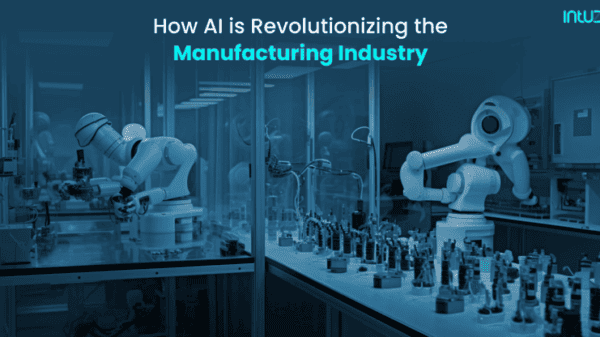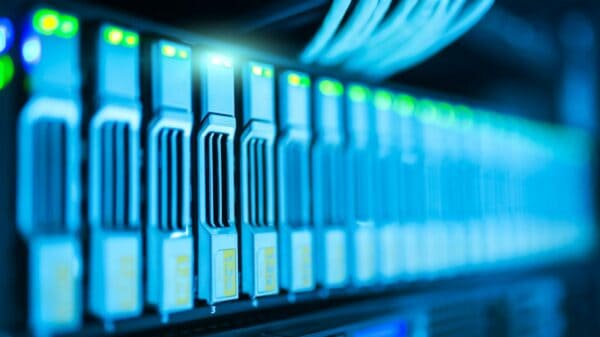Data is the currency for businesses in the current era. If you have data about your customers, you can take your business to remarkable heights. However, having data is not enough. You also need to analyze it to make changes to your business strategies.
As the data from the customers can be humongous, it needs to be inspected with the right technology to get better and faster results. This overall data collection, analysis, and implementation process are known as business intelligence.
The key technology that can help businesses get the most out of their data is IoT. IoT is a marvelous technology that uses devices like sensors to capture and analyze data and make decisions based on it. It has seen massive adoption in recent years and is still growing exponentially.
So, if you want to get better insights from your collected data, IoT should be your preference!
What is business intelligence & How can IoT help?
Business intelligence is a process in which businesses use technologies and strategies to collect and analyze data. Both past and present data are examined to devise strategies for future business growth.
A great example of this is Facebook ads. You can run the ad and see its interactions and actions. Based on the analysis aspects like views, product purchases, etc., you can make informed business decisions.
The thing where many of us struggle is data analysis. Due to a large number of data points to match and check, the process can become a bit tedious. This is where IoT can help.
An IoT-backed system can help you get what you want. In an IoT system, the acquired data can be sent to a central hub that carries the data analysis and generates interactive reports. These reports can be accessed from anywhere and checked for results. As this system is much faster, businesses can also grow faster.
Methods to Connect Business Intelligence to IoT Solutions!
As we are well-versed with the concept of IoT and business intelligence, let’s see how you can connect both.

Set your goal and make a plan
The first crucial thing to do is set a business goal and make a plan. As long as you don’t know what to achieve, you won’t be able to find out what data you need. The type of data matters a lot, and it varies from business to business.
For example, if you are a communication firm, the data that will be required for you is the base station data. The server signal level, heating, etc., are some of the aspects that need to be monitored. You would have to install advanced signal monitoring and transmission sensors along with temperature sensors for this. This data can be fed to the IoT gateway for analysis and devise outputs. These outputs can be displayed on a dashboard for a better understanding of the system and to make informed decisions.
Planning the use of data also includes the fact that all can see the data.
Store data and have a backup
When you know what data you need to fetch, the next thing to do is find a place to store it. As the data from the users will be massive, you will need something big to store it.
For example, if you are fetching data related to communication, it will be from different base stations from around the town or city. As the data will be more in volume, you would have to rely on cloud services for that. There are various vendors for cloud services out there, such as Amazon Web Services, Azure, Google Cloud, and others. You can choose from any of these for cloud data storage.
On top of this, it is also crucial to keep a backup of all the necessary data. Not all of it but some of the processed data should be backed up by some external system.
Data preparation and training
The term data preparation may seem a bit different or odd in a way to you. What it means is that you need to see how the data is being fetched and segregated. When using IoT devices, the data can be in various forms. For instance, the sensor data containing device temperature and signal frequency can be in a string such as “37T3000F”. “37” here is the temperature and 3000 is the frequency in hertz.
To ensure that the data is segregated properly, you need to train the central hub or gateway. There are various machine learning tools that you can use to train the hub to segregate your data into various categories.
Data investigation
When the data is segregated into their respective categories, it needs to be investigated. For this, you can use a data analytics tool that lets you organize and interpret data based on your preferences.
The key aim of data investigation is that you need to make it ready to be visualized. The results of data investigation make it easy to understand data changes and trends on a scale. Moreover, the final output is much more clean and conceivable.
Data visualization
The final step in the process is data visualization. As you have all the data fetched, segregated, organized, and modeled, it is time to visualize it in the best possible way. The main aim of this is to make it easy to understand by just looking at it. So, here you can use a tool that can create impressive and interactive visualizations of the data sets produced.
The visualizations can be in the form of charts, graphs, maps, and other representations.
What are the pros of connecting BI to IoT?
So now, you are aware of the ways through which you can connect business intelligence with IoT solutions. As IoT has a wide range of applications, it offers countless benefits too. Here are some of the pros that IoT can offer your business!

Efficient and effective operations
The inclusion of IoT makes the operations efficient and effective. Think about it! If you have a shipping firm that uses trucks for shipping goods, the inclusion of IoT sensors in the trucks can help you know where they are and how much time they will take to deliver. Your eye on the overall process can make it more efficient. If there are any delays, you will know that too beforehand.
Enhanced profitability
The timely delivery of goods at the right location will lead to an enhanced customer experience. This shall further enhance the profitability of your business by attracting new customers.
Seamless resource tracking
No matter if you have an eCommerce business or logistics, when you have integrated IoT in it, everything will run smoothly. Whether it is a customer order, inventory, or your shipping vehicle, you can track everything as long as it has an IoT sensor feeding it information.
Improved marketing
With IoT systems in place, you can automate your marketing system based on the responses received from the users. A trained model can analyze user responses related to a certain product and, based on that, help you devise effective marketing strategies.
Conclusion – Future Scope
As of now, IoT is being slowly leveraged by almost every industry. The manufacturing industry is one of the top industries to leverage IoT to automate and enhance operations. Business intelligence is already a smart concept, and when IoT is integrated into it, it will do wonders for you.
The future scope of IoT and business intelligence is bright, provided necessary security measures are taken.
Patrick R, A techno-commercial leader heading Intuz as Director of Growth With over 12 years of experience in the field of Information Technology. His experience and expertise will entice developers and business entrepreneurs with rich content on latest technology stack. Visit for more information: https://www.intuz.com/
























































































































































































